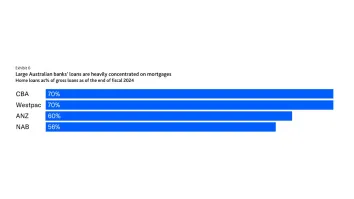
Why Singaporeans are okay with locking away over $4b of their money
Customers can only access ‘locked’ money with a physical card or by visiting a branch.
In late 2021, a series of phishing scams rocked one of Singapore’s largest banks by assets, changing the way banks do business. Clickable links were promptly removed from messages. Transfer notifications were made available for transactions as low as S$0.01. Limits were put in place, and default fund transfer values were made even smaller at just S$200.
The affected bank in question made goodwill payouts to affected customers, whilst the central bank imposed additional compliance requirements in the hundreds of millions.
Over two years later, banks in the Lion City rolled out the simplest and strictest of all defence measures: the money lock feature. Launched in November 2023, it was as straightforward as its name suggests, enabling bank customers to lock funds in their bank accounts. For OCBC in particular, funds can be locked via its app, but cannot be unlocked the same way.
Locked money also cannot be withdrawn or transferred via the online banking portal or through ATMs. Unlocking can only be done via ATM — and requires a physical card — or via visiting a physical branch.
Over $4b locked up
The extra friction may be the “harshest” yet in terms of accessibility, but if reception was any indication, Singaporeans are more than willing to take on the extra friction for protection.
Just three months into its launch, the feature has been activated by 38,000 accounts in Singapore, with a total value S$3.2b locked up, according to data gathered by the Association of Banks in Singapore (ABS).
“Whilst the money lock approach taken by various banks varies, they share a similar objective of protecting customers from scams by adding a layer of safeguard should their digital access to bank accounts be compromised,” Ong-Ang Ai Boon, director of ABS, told Asian Banking & Finance when asked about the rationale behind the feature.
Banks have all taken different approaches on how or where to apply the feature. OCBC, for example, launched the service in their time deposit accounts apart from just their digital and internet banking apps. In February 2024, OCBC’s total value locked up had already surpassed that reported for the whole industry just a month earlier: at $4.7b in value across 42,000 OCBC accounts.
“Customers like the convenience of being able to use our OCBC digital banking platforms to easily lock excess funds in their existing bank accounts without ‘losing out’ on attractive interest rates, such as the bonus interest earned on their account balances in the OCBC 360 Account,” Beaver Chua, head of anti-fraud, group financial crime compliance, OCBC, said when asked about why customers may have been keen to adopt the feature despite the extra friction.
Banks have also assured customers that “locked” money won’t lose out on interest. UOB, for example, offered an interest of up to 5% per annum for deposits up to S$125,000 that were locked under its UOB LockAway Account. The offer was available until 31 March, which may also have helped encourage customers to take up the service.
“They also recognise that the unique features of the account, such as the withdrawal of locked-up funds only at branches, are effective in keeping their hard-earned monies safe,” said Jacquelyn Tan, head, group personal financial services, UOB, speaking about the UOB LockAway Account.
Anti-scam features
Banks were mum on whether the money luck feature would become a mandatory requirement for all customers in the future. Instead, representatives said that they will continue to encourage their customers to adopt money lock and roll out other security features.
“We rolled out multiple anti-scam measures such as disrupting digital banking when unauthorised or risky apps are detected, instituting a cooling period of 12-hours for adding new payee, and SMS notifications when new payees are added,” Tan said.
OCBC, meanwhile, introduced a “kill switch” — an emergency feature that enables customers to immediately freeze all their accounts, their digital app access, and all their cards, according to Chua.
These features are much needed safeguards, both Tan and Chua said.
“As with all security features implemented, there is a need to balance between convenience, customer experience and mitigating risk, and as scammers’ tactics are constantly evolving, security measures, too, have to consistently be updated. At the same time, customers remain the first line of defence against all kinds of scams and must remain vigilant not to unwittingly give up their bank account credentials,” Chua said.
Tan also highlighted the role of the customer as the greatest safeguard against scams.
“Customers should be aware that scam methods are constantly changing and evolving, and these anti-scam measures are not foolproof. Our customers remain the singular most effective defence, so it is critical for them to always exercise vigilance and caution to safeguard themselves in this ever-evolving threat landscape,” Tan concluded.

















 Advertise
Advertise










